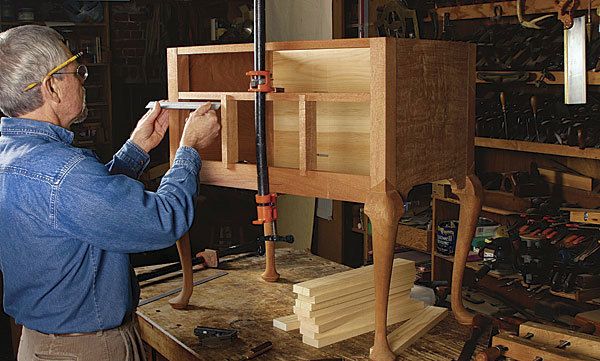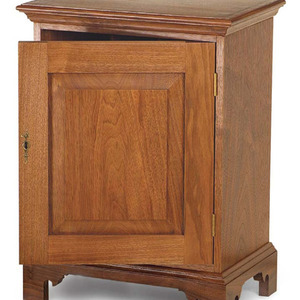Build in the Right Order
How expert furniture makers get flawless results and avoid headaches
Synopsis: You have the desire to build an elegant piece of furniture. You have the lumber, the tools, the basic skills, and the plans. You’re well on your way, but the tips offered here will give you the edge you need to ensure success. Learn to build in the right order, and all of your projects will get slightly more simple. Here are four basic furniture types, with time-tested advice on what to build first, next, and last. If you understand these, you should be able to handle almost everything else.
Drawings are important in any furniture project, but they don’t tell you where to start building. The choice is an important one. Building in the right order helps ensure that parts fit properly, and it gives you the flexibility to work around the small variations that are bound to occur. Choose poorly and the project can get a lot more complicated.
This approach goes hand in hand with another important idea, which is to avoid precutting all of your parts to final dimension. Instead, leave them slightly oversize. That way, you can cut them to fit the piece perfectly as it comes together.
So how do you choose where to start? The clearest general rule is to build the case first. Doing so lets you start with a single assembly that will control the dimensions of just about every other part in the project. Even in pieces that aren’t case pieces, this underlying idea still applies: Look for the assembly with the most control over other parts, and start there.
Practice this and you’ll find that for any piece of furniture, there’s a sequence that will make the task simpler.
Here are four basic furniture types, with time-tested advice on what to build first, next, and last. If you understand these, you should be able to handle almost everything else.
- Build the box
As with any case piece, the basic box comes first. You need to see the exact size of the case before you can measure for the shelf and size the face frame. Don’t forget to cut the shelf dadoes and rabbet the case parts for the back, if need be, before gluing up the case. - Add the shelf and size the face frame
With the case glued up, measure the inside width just below the top and add the dado depths for a perfect-fitting shelf. Build the face frame slightly oversize—1⁄32 in. on each side—so it can be planed flush. The frame should be attached before any other work is done, as it will define the opening for the door and could even pull the case slightly out of square when it is attached.
From Fine Woodworking #215
For the full article, download the PDF below:
Fine Woodworking Recommended Products

Dubuque Clamp Works Bar Clamps - 4 pack

Bessey K-Body Parallel-Jaw Clamp























Comments
Just had one question: Where did Phil get the bent black pipe for his clamp?
Log in or create an account to post a comment.
Sign up Log in